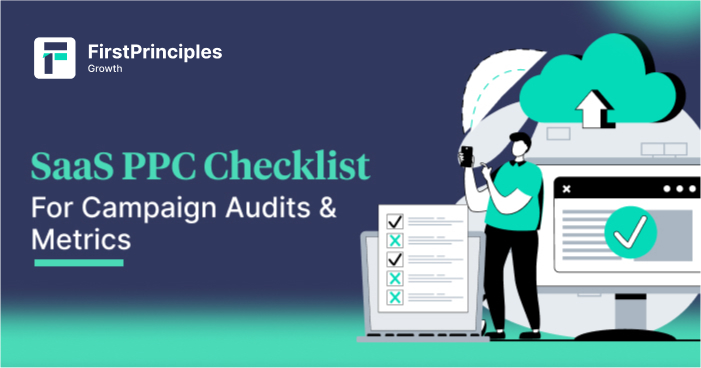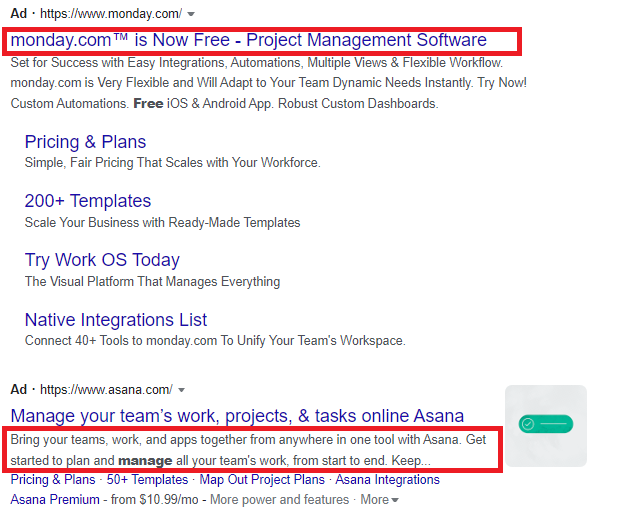
Home > SaaS PPC Checklist For Campaign Audits & Metrics
Table of Contents
ToggleHandling a PPC account or any account for that matter is quite a task. What’s even trickier is taking over someone else’s work, especially if you belong to the services industry and have a client who needs insights or working strategies for their Analytics account or Adwords account. Usually, the owner organizes it according to what he deems right and what he can work with. The owner might know the ins and outs of what’s happening, but if someone new takes over, they’ve got a tough nut to crack – that’s why they need an extensive SaaS PPC checklist.
To overcome this gap, you need to do an extensive PPC audit every time you take on an existing Google Adwords account.
PPC audit assesses the performance of paid advertising strategy by evaluating the cost performance and returns of the ad campaigns, ad groups, and personal ads. PPC audits are a recurring thing that should happen on a routine basis to help maximize the performance of your PPC strategy.
In a Google AdWords account, there are a bunch of metrics to track and analyze the performance of your ads, and before we dive into the key metrics, here’s a PPC audit checklist with a list of things you need to look at first.
When auditing PPC campaigns, the first and obvious step has to be checking your location targeting settings. Ensure that the regions are set up correctly, as this will help you define your target audience and frame strategies to get the most out of the ads.
You can also exclude locations that your company doesn’t want to target. For instance, eCommerce-based websites can exclude areas where the items can’t be delivered. You can also check geo-reports to understand which locations perform the best and target.
Additionally, you’d also want to check and adjust mobile bids. Segment your performance by the device and assess the effectiveness of existing mobile bids.
To gather as much data as possible, you need to set a date range that covers a broader period, like 3 months or comparison between 2 specific months or quarters.
For starters, look at three months’ worth of data to help understand if your strategies are working.
Export all the data (PPC account data from specific campaigns or custom exports) for the selected date range into a spreadsheet to keep your data organized.
When analyzing your PPC campaign, make sure that you check your ad content as it directly impacts how your audience responds to your ad. Ensure that your ad answers the question “why should I care?” or “How does this help me?”. Additionally, make sure that your ad targets the

Quality score, an essential aspect of your PPC campaign, helps determine your ad’s placement which means, to improve its placement, you need to improve the quality score.
Your quality score is determined by your ad relevancy and click-through rate (CTR). If your ad is more relevant to people’s search queries, they are more likely to click on it.
When conducting your PPC audit, you’ll want to pay attention to your quality score.
While conducting a PPC audit, reevaluate your keyword selection. Keywords are a vital driving force that draws traffic to your website, meaning they significantly impact your ads’ performance.
Also, ensure that you optimize your PPC ad campaign for long-tail keywords that contain three or more words, like “saas SEO checklist download.” Apart from adding them to your ads, make sure you add them to the landing page. These long-tail keywords help you narrow down the incoming traffic.
It’s essential to constantly monitor your ads’ CTR as it will help you understand whether the audience you’re targeting is interested in your ad or not. The average CTR for Google Ads falls between 3 and 5%; the higher, the better. Along with this metric, you also need to keep tabs on the bounce rate, which should be < 35%.
A low CTR indicates poorly written ad copy or the wrong target audience. Conversely, a high CTR means your PPC ad appears relevant in the search results. However, CTR alone isn’t the only metric to worry about. You also need to keep track of the conversion rate. Let’s face it, a higher CTR with a low conversion rate isn’t helpful for your business. In this case, you might need to check your ad’s landing page.
The ultimate goal you need to focus on is a high CTR with a high conversion rate, indicating that your ad is relevant.
One important thing that you need to track is the bid amount. To get better at bidding, you can follow these steps:
It’s a no-brainer that your profit margin is thin if you spend $7 on an ad and visitors buy a $10 product. You would want to leave room for your business to make a profit.
You need to reevaluate your strategy and get your costs and ROI right; analyzing your bid amount will help you with that.
PPC ads can sometimes appear in search results for different cities, states, or places you are not targeting. You can resolve this by using location analysis. Google ads help you see how your ad appears in different cities and areas, and if there are specific locations with a better ROI, you can plan on investing more funds there, as this will help you drive the desired results.
Prepare and export data for the following metrics for your Google ad campaign:
One of the most specific PPC metrics, impression share, tells you how many people saw your ad (not clicked). Impressions tell you where you stand in comparison to your competitors. You can leverage this data to boost your impressions and outrank your competitors.
The number of impressions your ad received / Number of impressions your ad was eligible to receive.
Ideally, it should be close to 100% (70-100% will work too).
It’s critical to know how much (on average) a user’s click costs you.
The total cost of your clicks / Total number of clicks
The average CPC for Google Ads is $2.69 for all industries.
Getting your customers’ attention is essential, but converting them into paying customers is what drives businesses. Many factors impact this metric: Your ad title, ad copy, landing page experience, CTA, etc. Here are a few things you need to check for a decreasing conversion rate:
For SaaS businesses, the conversion rate can be calculated by signups or booked appointments. An average visitor-to-lead conversion for SaaS is 7%.
This metric tells you whether they’re profitable or not. The average CPA is the price you pay to acquire each customer via your ad.
The total cost of your conversions / Number of conversions
Along with this, you also need to consider your profit margins and the lifetime value of a customer.
To compare campaigns, ad groups, and keywords, check the Total Conversion Value. This will help you understand what promotes your services or SaaS to increase sales. If you want to plan a retargeting strategy, this can also be a helpful metric.
Want to get the best results out of your PPC campaign? Conduct a PPC audit now!
A PPC audit will help you figure out where you can improve your campaign for better ROI. With Firstprinciples Growth Advisory, you can get a quick PPC audit and start working on enhancing ROI in no time. Speak with a strategist today!
Pushkar Sinha is the Head of Digital Marketing at FirstPrinciples Growth Advisory. With 15+ years of expertise, he specializes in SEOfor European, American, and Indian markets, both in agency and in-house roles. His holistic skill set encompasses Google Ads, Affiliate Marketing, SEO, SEM, PPC, E-Commerce, and Project Management. Pushkar is...